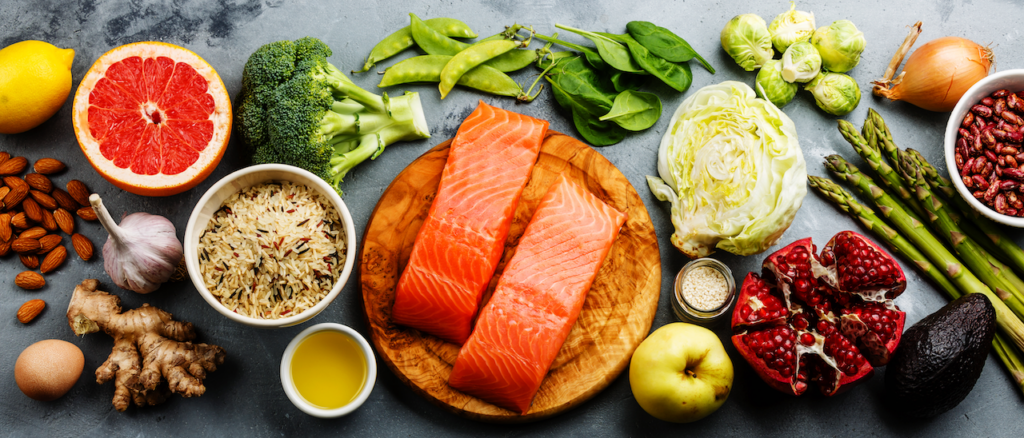Our Pilates experts reveal the best foods to incorporate into your diet when doing Pilates in a way that is totally customizable to your food preferences.
July 10th 2019

Best Diet When Doing Pilates
Your body works and functions at its optimum potential when you exercise and fuel it correctly. Though there is no certified diet to follow while doing Pilates, there are many healthy food options out there that can help you prep your body before Pilates and recharge after each session. Since your Pilates routine is likely core focused, you may want to nix eating right before your session or eat only a small snack to avoid discomfort.
Remember to Stay Hydrated
Staying hydrated is the most crucial part of a Pilates diet, especially in Florida. Water is the first and foremost choice you should be making to quench your thirst, and the benefits of choosing it as your primary hydration source are nearly endless. Pass on energy drinks, sports drinks, iced coffee, and juices as these are extremely high in sugar and will bring unneeded, unwanted calories. You can get every positive effect these drinks may have to offer from a healthier, natural food option instead.
Get Vitamins, Minerals, and More from Fruits
Many fruits can provide the same amount of electrolytes—if not more—that a sports drink such as Gatorade can, but have the extra natural vitamins and minerals that many sports drinks lack. Fruits can also help curb a sweet tooth and keep you feeling full. The best fruits to incorporate into your Pilates diet are:
- Pomegranates
- Oranges
- Bananas
- Watermelons
- Cucumbers
Pomegranates contain powerful antioxidants, aid in reducing inflammation, and are exploding with potassium and magnesium, which are considered electrolytes. Oranges, well known for containing vitamin C which aids in tissue repair, are rich in calcium and folate. Bananas are jam-packed with potassium and carbohydrates, which support nerve and muscle functions. Watermelons are approximately 92% water and are rich in lycopene, potassium, and magnesium. Cucumbers, which are approximately 95% water, are a great source of B1, B5, and B7. Additionally, cucumbers are high in magnesium, calcium, and potassium, and have a natural cooling anti-inflammatory effect on the body.
Take your fruits a step further and mix them in with a low fat, low sugar greek yogurt. Greek yogurt has half the sodium, fewer carbs, and almost twice as much protein as regular yogurt. The carbs from the fruit breakdown quickly, fueling your body for each Pilates session, and the protein from the yogurt helps prevent and heal muscle damage. It’s a perfect pairing.
Replenish Your Body with Vegetables
Vegetables are a great natural source to prepare your body for your workout and replenish your body afterwards. They are packed with vitamins, minerals, and antioxidants to burn fat and convert it to energy. Dark, leafy greens such as spinach, kale, and lettuce are easy to integrate into any pre-existing meal. Mushrooms are rich in protein, can help regulate blood glucose levels, and can be added to a pre-existing meal or made into their own meal by stuffing them. Broccoli and cauliflower, which contain folate and vitamin C, are extremely filling options. Asparagus is delicious on the grill and contains asparagine, which is a chemical compound that helps to break down fat.
Switch to Whole Grain & Multigrain Foods
Grains are vital sources of many nutrients, including fiber, B vitamins (thiamin, riboflavin, niacin and folate), iron, magnesium, and selenium. Whole grain and multigrain foods are high in fiber, which can create a feeling of fullness from fewer calories and are excellent with lowering cholesterol. Substitute white bread with whole wheat bread on sandwiches and switch to a wheat pasta for dinner. Daily servings of grains are recommended between 3 to 8 ounces per day depending on your calorie intake.
Don’t Forget to Add Protein
Protein is one of the most important building blocks you have in your body; your bones, muscles, cartilage, skin, and blood all depend on it. Since exercising can damage proteins, it’s vital to stock up on them throughout the day to keep your body balanced. Eggs, chicken breast, fish, peanut butter, and raw nuts are amazing protein sources that are not loaded with unhealthy carbs or sugars and can keep you feeling full. Opt for a nut-based protein bar if you’re in a rush or need a snack before your Pilates class, but check the ingredients beforehand to make sure it isn’t mainly sugar.
Post-Exercise Meal Ideas
After an exercise session, your body needs to restore its glycogen levels. Some of the proteins in your muscles can also be damaged, broken down, and depleted. It’s important to eat a small meal or snack within two hours of your exercise to restore the glycogen and repair and regrow muscle proteins. A few great post-exercise snack ideas are:
- Grilled Chicken with Roasted Vegetables
- Avocado Spread on Toast
- Salmon with Sweet Potatoes
- Tuna Sandwich on Whole Grain Bread
- Cottage Cheese and Fruits
- Pita and Hummus.
- Rice Crackers and Peanut Butter
- Whole Grain Toast and Almond Butter
- Low-Sugar Cereal and Skim Milk
- Greek Yogurt, Berries, and Granola
- Quinoa Bowl with Fruits and Nuts
Whether you’re refueling after Pilates, personal training, or a cardio session, a combination of proteins, carbs, and good fats are the best choice to replenish the nutrients your body used up during your workout.
Start Your Journey with Mount Dora Pilates
Life can be hectic and overwhelming, but that doesn’t mean we have to let it compromise our fitness routine. On the Run Fitness & Pilates offers convenient classes throughout the day to fit into your schedule. We offer private sessions, semi-private sessions, and reformer Pilates classes. Contact us today to schedule your first session and become a part of the elevating world of Pilates!
